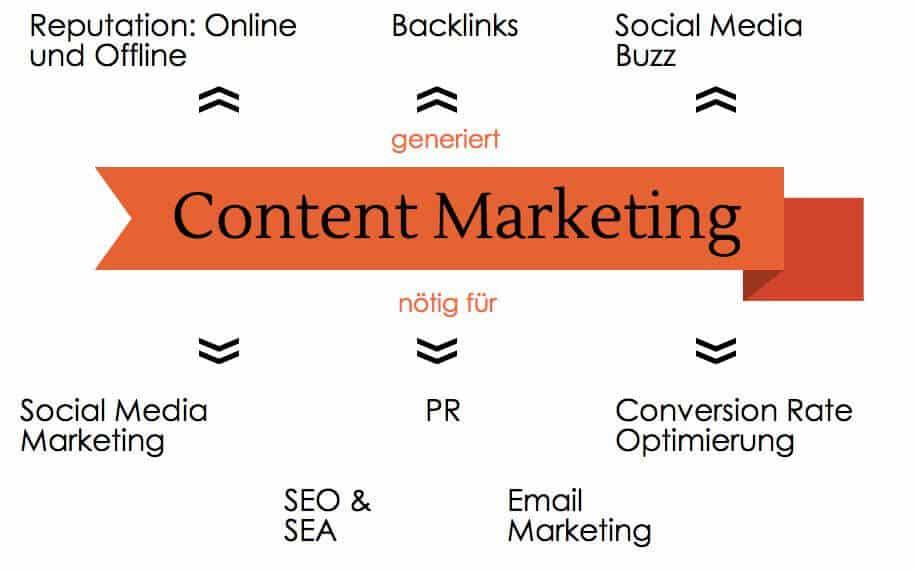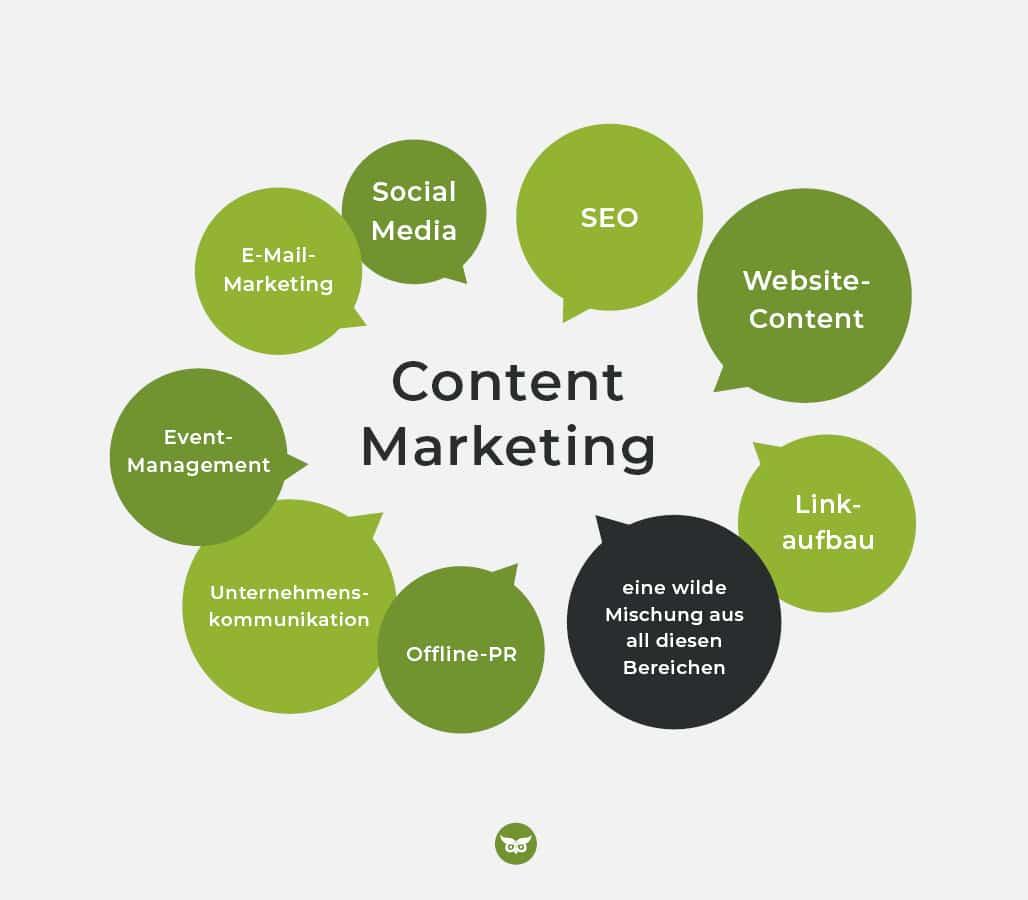In today’s digital landscape, where information is just a click away, businesses are constantly vying for attention in a crowded marketplace. For B2B companies, the challenge is even more pronounced. Enter content marketing—a powerful ally in the quest for visibility and engagement. Imagine a strategy that not only boosts your search engine rankings but also positions your brand as a thought leader in your industry. Sounds appealing, right? In this article, we’ll explore how content marketing plays a pivotal role in enhancing B2B SEO and why investing in quality content is no longer just an option, but a necessity for businesses looking to thrive online.Whether you’re a seasoned marketer or just starting out, understanding this relationship can transform your approach and lead to remarkable results. Let’s dive in!
understanding the Connection Between Content Marketing and B2B SEO
Content marketing and B2B SEO are two sides of the same coin, both essential for driving traffic, generating leads, and converting prospects into loyal customers. In the B2B landscape, where decision-making processes are often lengthy and complex, the synergy between these two strategies becomes even more crucial.
At its core, content marketing aims to provide value to the audience. This is achieved through:
- Informative blog posts that answer industry questions.
- Compelling case studies that showcase real-life success stories.
- Engaging infographics that simplify complex data.
- Webinars and podcasts that allow for deeper interactions and knowledge sharing.
Each piece of content serves a dual purpose: establishing your brand as an authority in the field and optimizing for search engines. By integrating relevant keywords naturally into your content, you increase the chances of ranking higher in search results.This is particularly crucial in B2B, where potential clients often conduct extensive online research before making purchasing decisions.
Moreover, high-quality content not only attracts visitors but also encourages them to stay longer on your site. Metrics such as page dwell time and low bounce rates are signals to search engines that your content is valuable, further boosting your SEO performance.Here’s a quick look at how content influences SEO:
| content type | SEO Benefit |
|---|---|
| Blog Posts | Increases organic traffic through targeted keywords. |
| Infographics | Encourages backlinks due to shareability. |
| Case Studies | Improves credibility and trust with potential clients. |
| Webinars | Drives engagement and leads through interactive content. |
Additionally, utilizing analytics tools to measure the performance of your content can provide insights into what resonates with your audience. This allows for continuous advancement and optimization of both your content and SEO strategies. By understanding wich topics draw the most traffic or which formats lead to more conversions,you can refine your approach to better meet the needs of your target market.
the relationship between content marketing and B2B SEO is inherently collaborative. Social media platforms and email marketing strategies can amplify your content’s reach, driving more traffic to your site while enhancing your online visibility. When executed in tandem, these strategies not only improve your rankings but also cultivate a loyal customer base that values your insights and expertise.
Why Quality Content is Key to B2B SEO Success
When it comes to B2B SEO, quality content is not just a luxury—it’s a necessity. In an online landscape saturated with information, businesses need to stand out by delivering valuable, relevant, and engaging content that resonates with their target audience. Here are some key reasons why quality content is essential for achieving SEO success in the B2B sector:
- Establishes Authority: Well-researched and insightful content positions your brand as an industry leader. When you offer valuable information, potential clients are more likely to view your business as a trusted authority.
- Enhances User Experience: Quality content improves the user experience by providing answers to common questions and solutions to pressing problems. This keeps visitors on your site longer and reduces bounce rates, which are crucial for SEO rankings.
- Encourages Backlinks: Other sites are more inclined to link to content that is informative and valuable. Backlinks from reputable sources can considerably boost your site’s authority and improve your search engine ranking.
- Supports Keyword Strategy: High-quality content provides opportunities to naturally incorporate targeted keywords. This helps search engines understand what your content is about and boosts its chances of ranking higher in search results.
- Facilitates Social Sharing: Engaging content is more likely to be shared on social media platforms, increasing your reach and driving traffic back to your site. This can lead to more leads and potential conversions.
Moreover, creating quality content aligns with today’s buyer behaviors. B2B buyers are increasingly seeking out information before making purchase decisions. By providing them with the content they need—be it case studies, whitepapers, or blog posts—you not only attract traffic but also nurture leads through their decision-making process.
| Content Type | benefits |
|---|---|
| Blog Posts | Educate and inform, improve SEO with keywords |
| Infographics | Visual appeal, easy to share, concise information |
| Whitepapers | In-depth analysis, establish thought leadership |
| Case Studies | Show real-life success, build credibility |
prioritizing quality content in your B2B SEO strategy is the cornerstone of not only attracting but retaining customers. By focusing on delivering meaningful and engaging content, your business can effectively improve its online visibility and foster long-term relationships with clients.

Crafting Content That Speaks to Your Target Audience
Understanding your target audience is the cornerstone of effective content marketing in the B2B realm. To truly resonate, your content must not only speak their language but also address their pain points, aspirations, and preferences. This connection fosters trust and establishes your brand as a thought leader in your industry.
To craft content that genuinely engages, consider the following strategies:
- Know Your Audience: Conduct thorough research to understand demographics, industry challenges, and the types of content they consume. Create detailed buyer personas to visualize and tailor your content.
- Use Their Language: Incorporate industry jargon and terminology that your audience is familiar with. This shows that you understand their world and can communicate effectively.
- Address Pain Points: identify the specific challenges your target audience faces and provide actionable solutions in your content. This not only attracts their attention but positions your brand as the go-to resource.
- Engage with Storytelling: Utilize storytelling techniques to make your content relatable. Share case studies or success stories that highlight how your services have made a difference.
- Encourage Interaction: Incorporate calls to action that invite feedback or discussion, such as polls or comment sections. Engagement fosters a sense of community and shows you value their opinions.
Additionally, leveraging analytics can greatly enhance your content strategy. Tools such as Google Analytics and social media insights allow you to track audience behavior and preferences, leading to more informed content creation. Here’s a simple table to illustrate key metrics to monitor:
| Metric | What It Tells You |
|---|---|
| Page Views | Indicates overall interest in your content. |
| Time on Page | Shows how engaging your content is. |
| Bounce Rate | Highlights areas where content may not meet audience expectations. |
| Conversion Rate | Measures success in driving desired actions (e.g., downloads, sign-ups). |
remember that content marketing is not a one-size-fits-all approach. It requires continuous refinement and adaptation. Regularly audit your content to ensure it remains relevant and aligned with your audience’s evolving needs. By doing so, you’ll not only enhance your SEO efforts but also foster long-lasting relationships with your target audience.

Leveraging Keywords Effectively: The Heart of B2B Content Strategy
In the fast-paced world of B2B, where decision-making is driven by research and insights, keywords play a pivotal role in guiding your content strategy.By understanding the specific terms and phrases that resonate with your target audience, you can create content that not only attracts visitors but also converts them into leads. The foundation of a successful approach lies in identifying the right keywords relevant to your industry,products,and services.
To effectively leverage keywords, consider the following strategies:
- Keyword Research: Utilize tools like Google Keyword Planner or SEMrush to discover high-volume keywords that align with your offerings. look for long-tail keywords that are less competitive but highly relevant.
- Content Mapping: Align your identified keywords with specific content types. For instance, use informational keywords for blog posts and transactional keywords for landing pages.
- On-Page Optimization: integrate your primary keywords naturally into titles, headers, and throughout the body of your content. Don’t forget about meta descriptions and alt text for images.
- Monitor and Adjust: Regularly track the performance of your keywords using analytics tools. Be prepared to pivot your strategy based on what the data reveals about your audience’s search behaviors.
Moreover, engaging content not only helps with SEO but also establishes your brand as a thought leader within your industry. Here are some content types that can benefit from well-researched keywords:
| Content Type | Keyword Application |
|---|---|
| Blog Posts | Informative and long-tail keywords to drive organic traffic |
| Whitepapers | Industry-specific keywords to showcase expertise |
| Webinars | Trigger words and phrases that highlight pain points and solutions |
| Email Campaigns | Targeted keywords for personalization and call-to-action prompts |
Ultimately, the key to a robust B2B content strategy lies in the seamless integration of these keywords. Focus on creating valuable content that addresses your audience’s needs while subtly guiding them through the buyer’s journey. This not only enhances visibility but also fosters trust and engagement.
Remember, effective keyword usage is not just about stuffing your content with terms; it’s about creating a natural flow that speaks to your audience. The right balance will elevate your SEO efforts and position your brand as the go-to source for industry insights.

Building Authority Through Thought Leadership Content
In the competitive landscape of B2B SEO, establishing your brand as a trusted authority is essential. One effective way to achieve this is through the creation of thought leadership content that resonates with your audience and addresses their pain points. By sharing insights and expertise, you can foster a deeper connection with your target market and elevate your brand’s credibility.
When producing thought leadership content, focus on these key strategies:
- Know Your Audience: Understand who your ideal customers are and what challenges they face. Tailor your content to speak directly to their needs and interests.
- Be Authentic: Share personal experiences and lessons learned. Authenticity helps build trust and can differentiate your brand from competitors.
- Stay Current: Stay abreast of industry trends and emerging topics. Providing timely insights positions your brand as a go-to resource for valuable information.
- Leverage Multiple Formats: Experiment with various content formats, such as blogs, white papers, infographics, and videos.This variety can cater to different preferences and increase engagement.
Effective thought leadership content not only showcases your expertise but also encourages engagement from your audience. Consider creating opportunities for interaction, such as:
- webinars: Host live events where you can discuss pertinent topics and answer real-time questions from participants.
- Q&A Sessions: invite your audience to submit questions that you can address in blog posts or video content.
- Surveys and Polls: Conduct surveys to gather insights on industry challenges and share the results in your content.
To illustrate the impact of thought leadership on SEO, consider the following table that highlights key metrics tied to content marketing strategy:
| Metric | Impact of Thought Leadership Content |
|---|---|
| Website Traffic | Increased by 50% through targeted content |
| Lead Generation | Boosted by 30% via gated content offers |
| Social Shares | enhanced engagement with 200% more shares on average |
| Search Rankings | Improved positions for 40+ relevant keywords |
by focusing on crafting insightful and relevant thought leadership content, businesses can not only improve their SEO rankings but also cultivate a loyal audience that views them as an indispensable resource. This dual benefit makes it a compelling strategy for B2B organizations looking to thrive in today’s digital landscape.
The Power of Consistency in Content Marketing for SEO
In the realm of content marketing, consistency is not just a strategy; it’s a necessity. When businesses commit to regularly publishing quality content, they create a robust framework that enhances their visibility in search engine results. This sustained effort signals to search engines that your website is active and worth ranking higher.
Here are a few compelling reasons why consistency is a game-changer:
- Builds Authority: Regularly updated content positions your brand as a thought leader in your industry. When your audience sees that you’re consistently sharing valuable insights, they’re more likely to trust your expertise.
- Increases Engagement: Frequent content updates provide more opportunities for engagement.Whether it’s comments, shares, or backlinks, consistent content keeps your audience involved and helps expand your reach.
- Improves SEO Rankings: Search engines favor fresh content.By maintaining a steady flow of new articles, blog posts, and resources, you enhance your chances of climbing higher in search results.
Consider this simple table that outlines a basic content consistency plan:
| Month | Content Type | Frequency |
|---|---|---|
| January | Blog Posts | 2 per week |
| February | Infographics | 1 per week |
| March | Case Studies | 1 per month |
Additionally, consistency in messaging and branding across your content forms a cohesive narrative that resonates with your audience. When your readers can easily identify your unique voice, they’re more likely to engage with your content and share it with their networks.
Ultimately, creating a content calendar can help you stay on track. By planning out your topics and formats in advance, you ensure that your content marketing efforts align with your SEO goals. Remember, each piece of content is a stepping stone toward greater visibility and authority in your industry.

Optimizing Your Content for Search Engines and Readers Alike
In the dynamic landscape of B2B SEO, striking a balance between search engine optimization and user engagement is crucial. Crafting content that resonates with your audience while adhering to SEO best practices can significantly boost your online visibility. Here’s how to achieve that balance:
- Understand Your Audience: Before you start creating content, invest time in understanding your target audience. What are their pain points? What solutions do they seek? Utilize surveys, interviews, and analytics to gather insights that will shape your content strategy.
- Keyword Research: identify keywords that are not only relevant to your business but also popular among your audience. Use tools like Google Keyword Planner or SEMrush to find terms that have high search volumes but manageable competition.
- Quality Over Quantity: While it’s tempting to churn out content regularly,focusing on quality will yield better results. Create in-depth articles that provide genuine value, answering common questions and providing actionable insights.
Once you have a solid understanding of your audience and keywords, it’s time to craft your content. Here are some strategies to enhance both SEO and reader engagement:
- Compelling Headlines: Your title is the first thing a reader sees. Make it catchy and informative to grab attention while incorporating your primary keyword.
- Utilize Formatting: Break up text with subheadings, bullet points, and images. This not only improves readability but also helps search engines understand the structure of your content.
- Internal and External links: Linking to other relevant articles on your site can keep readers engaged longer. Additionally, reputable external links can enhance your credibility and improve SEO.
Monitoring your content’s performance is essential to refine your strategy further.Consider using a table to track metrics such as:
| Metric | Description | Target Value |
|---|---|---|
| Organic Traffic | Visitors coming from search engines | Increase by 30% in 6 months |
| Bounce Rate | Percentage of visitors who leave after one page | Lower to under 40% |
| Conversion Rate | Leads generated from content | Achieve 10% from traffic |
optimizing your content for both search engines and readers means constantly adapting and improving. by focusing on quality content that meets the needs of your audience, you can pave the way for successful B2B SEO and ultimately drive more leads to your business.

Utilizing Data and Analytics to Refine Your Content Strategy
In today’s fast-paced digital landscape, making informed decisions based on data is more critical then ever for B2B marketers. By harnessing the power of data and analytics, businesses can refine their content strategies to better meet the needs of their target audience.
start by tracking essential metrics to understand how your content performs. Here are some key performance indicators (KPIs) to consider:
- Traffic Sources: Identify which channels drive the most visitors to your content.
- User Engagement: monitor metrics like time on page, bounce rate, and scroll depth.
- Conversion Rates: Assess how well your content converts visitors into leads.
- SEO Performance: Track keyword rankings, organic search traffic, and backlinks.
Utilizing tools like Google Analytics or HubSpot can provide you with valuable insights into these metrics. For example, if you find that a blog post on “Industry Trends” attracts significant traffic but has a high bounce rate, it may indicate that while the title pulls people in, the content fails to deliver. This is your opportunity to make adjustments!
Another effective way to leverage data is through A/B testing. By comparing different versions of content—be it headlines, CTAs, or visuals—you can determine what resonates best with your audience.This not only enhances user experience but also significantly boosts your content’s effectiveness.
Here’s a simple table summarizing the benefits of A/B testing in content marketing:
| Aspect | Benefit |
|---|---|
| Headlines | Increases click-through rates by identifying compelling titles. |
| Content Format | Determines the most engaging formats (videos, infographics, etc.). |
| Calls-to-Action | Improves conversion rates by optimizing CTAs. |
Lastly, don’t overlook the importance of audience segmentation. Analyze your audience data to create tailored content that speaks to specific segments. Personalization can significantly enhance the relevance of your content, leading to improved engagement and conversion rates.
By continually refining your content strategy using data and analytics, you can create a more focused approach that not only enhances your SEO efforts but also aligns closely with your audience’s needs and preferences.

Promoting Your Content: The Bridge Between Creation and Visibility
When it comes to making your content shine, understanding the bridge between creation and visibility is crucial. After you’ve poured your heart and creativity into crafting high-quality content, the next step is ensuring it reaches the right audience. This is where content marketing steps in as a powerful ally, especially in the realm of B2B SEO.
To enhance the visibility of your content, consider implementing the following strategies:
- Social Media Sharing: Utilize platforms where your target audience hangs out. Sharing snippets, infographics, or links to your content can significantly boost engagement and visibility.
- Email Marketing: Don’t underestimate the power of a well-crafted email. Sending out newsletters featuring your latest content can drive traffic and keep your audience informed.
- Collaboration and Partnerships: Team up with industry influencers or complementary businesses. Guest blogging, podcasting, or co-hosting webinars can open up new channels for reaching potential customers.
Additionally, SEO optimization plays a crucial role in making sure your content is discoverable. This includes:
- Keyword Research: Identify the terms your audience is searching for and weave them naturally into your content.
- Meta Descriptions: Craft compelling meta descriptions that summarize your content and entice clicks.
- Internal and External Linking: Link to other relevant content within your site and reputable external sources to enhance credibility and improve SEO.
Moreover,consider using a content calendar to maintain consistency in your publishing schedule. Regularly updated content not only keeps your audience engaged but also signals to search engines that your site is active. Here’s a simple table to illustrate how a content calendar can be structured:
| Date | Content Type | Title/Topic | Distribution Channels |
|---|---|---|---|
| 01/15/2023 | Blog Post | Understanding B2B SEO | Social Media, Email |
| 01/22/2023 | Infographic | SEO Best Practices | LinkedIn, Pinterest |
| 01/29/2023 | Webinar | Boosting B2B Content Marketing | Website, Email |
always monitor and analyze your content performance.Tools like google Analytics can provide insights into what resonates with your audience, helping you refine your strategies over time. By continuously promoting your content and optimizing for SEO, you’ll create a virtuous cycle that drives visibility and engagement, ultimately leading to greater success in your B2B endeavors.

Integrating social Media for Enhanced B2B SEO
In today’s digital landscape, integrating social media into your B2B SEO strategy isn’t just a nice-to-have; it’s a must. Social platforms offer a unique opportunity to amplify your content, driving traffic and improving your visibility in search engine results. By engaging with your audience on social media, you can not only share your content but also create conversations that spark interest and lead to valuable backlinks.
Consider these key benefits of using social media to enhance your B2B SEO:
- Increased Brand Awareness: Your content reaches a wider audience, increasing the likelihood of it being shared and linked back to.
- Improved Content Longevity: Social media keeps your content alive longer, attracting visitors even months after it was first published.
- Enhanced Engagement: Social platforms facilitate discussions, fostering relationships that can lead to partnership opportunities.
- Real-Time Feedback: Use social media to gauge your audience’s response to your content, allowing for adjustments that can improve future campaigns.
One effective method of integrating social media into your SEO strategy is through the strategic promotion of your blog posts and articles. When you share content on platforms like LinkedIn or Twitter, you’re not only driving direct traffic but also inviting conversations that can lead to organic backlinks. These backlinks are crucial for SEO, as they signal to search engines that your content is valuable and trustworthy.
Additionally, consider creating engaging and shareable content formats such as infographics or short videos.These formats are often more appealing on social media platforms, leading to higher engagement rates. Higher engagement can translate into increased shares, further boosting your SEO efforts.
To illustrate the impact of social media on SEO, here’s a brief comparison of the engagement metrics you might expect from conventional content promotion versus social media promotion:
| Promotion Method | Average Click-Through Rate (%) | Average Shares |
|---|---|---|
| Traditional Email Marketing | 2.5 | 50 |
| Social Media Promotion | 6.0 | 200 |
As you can see, leveraging social media can significantly enhance the performance of your content marketing efforts, leading to better SEO outcomes. Don’t overlook the power of social media; make it a core part of your B2B SEO strategy. By fostering a community around your brand, your content will not only reach more people but will also build authority and trust in your industry.

Measuring the impact of Content Marketing on Your SEO Performance
Understanding the relationship between content marketing and SEO performance is crucial for any B2B organization looking to enhance its online presence. Engaging content not only attracts visitors but also encourages them to stay longer on your site,which can significantly improve your search engine rankings. Here’s how to gauge the impact of your content marketing efforts on SEO:
1. Traffic Analytics: Start by analyzing your website traffic. Use tools like Google Analytics to track the number of visitors coming to your site from your content efforts. Look for:
- Organic search traffic growth.
- Referral traffic from shared content on social media or partner sites.
- Behavior metrics such as bounce rate and average session duration.
2. Keyword Rankings: Another critical factor to measure is your ranking for targeted keywords. After implementing a content marketing strategy, monitor:
- Your position on search engine results pages (SERPs) for primary keywords.
- Rankings for long-tail keywords relevant to your industry.
- Changes in keyword visibility over time.
3.Engagement metrics: High-quality content should resonate with your audience, leading to greater engagement.Track these metrics:
- Social shares and comments on your content.
- Conversion rates from content-driven landing pages.
- Newsletter subscriptions or downloads of gated content.
Additionally, consider creating a simple table to visualize your metrics over time. Here’s an example:
| month | Organic Traffic | New keywords | Engagement Rate |
|---|---|---|---|
| January | 1500 | 10 | 5% |
| February | 2000 | 15 | 7% |
| March | 2500 | 25 | 10% |
Ultimately, the key to measuring success lies in consistently analyzing these metrics and adjusting your strategy accordingly. By aligning your content marketing with your SEO objectives, you can create a robust ecosystem that enhances visibility, drives traffic, and fosters long-term relationships with your audience.

Future Trends in Content Marketing and B2B SEO You Shouldnt Ignore
Embracing AI-Powered Content Creation
As artificial intelligence continues to evolve,its impact on content marketing and B2B SEO is becoming increasingly profound. AI tools can analyze vast amounts of data to identify trending topics,assess audience sentiment,and even create high-quality content that resonates with your target market.By leveraging AI, businesses can produce tailored content at scale while freeing up valuable resources.
the Rise of Interactive Content
Engaging your audience is more critically important than ever, and interactive content is a powerful tool to achieve this. Formats such as quizzes,polls,and interactive infographics not only capture attention but also encourage longer on-site engagement and social sharing. Consider incorporating:
- Quizzes that provide personalized insights.
- Calculators to help prospects understand potential ROI.
- Interactive infographics that allow users to explore data dynamically.
Video Content as a Core Component
Video content is no longer optional; it’s essential. With platforms like YouTube becoming search engines in their own right, integrating video into your B2B content strategy can significantly boost visibility. Short,informative videos can enhance your SEO efforts by:
- Improving dwell time on landing pages.
- Increasing shareability across social media platforms.
- Providing a more engaging way to convey complex information.
Focus on Voice Search Optimization
With the increasing use of voice-activated devices, optimizing for voice search can give you a competitive edge. This means rethinking your keyword strategy to include more conversational phrases and questions. Consider using:
| Voice Search Optimization Tips | Implementation |
|---|---|
| Use Natural Language | Craft content that sounds conversational. |
| Answer Common Questions | Create FAQs to target voice queries. |
| Optimize for Local Searches | Include local SEO strategies for local voice queries. |
Data-Driven Decision Making
the ability to analyze data and derive insights is becoming crucial in shaping content marketing strategies. Utilizing analytics tools allows B2B marketers to identify what works and what doesn’t, enabling them to refine their approaches continuously.Metrics to monitor include:
- Engagement rates across different content types.
- Conversion rates linked to specific campaigns.
- Organic traffic growth from SEO efforts.
Frequently Asked Questions (FAQ)
Q&A: The Role of Content Marketing in B2B SEO
Q: What exactly is content marketing, and why is it critically important for B2B businesses?
A: Great question! Content marketing is all about creating valuable, relevant content to attract and engage a specific target audience. In the B2B space, it’s crucial as businesses don’t just want to sell; they want to build relationships. High-quality content helps establish authority, builds trust, and ultimately drives conversions. When you provide informative articles,case studies,or whitepapers that address your audience’s pain points,you position your brand as a thought leader,which can set you apart from competitors.
Q: how does content marketing specifically impact SEO for B2B companies?
A: Content marketing and SEO go hand in hand. When you produce optimized content that answers your audience’s questions, you increase your chances of ranking higher in search engine results. Google loves fresh, relevant content! By integrating keywords naturally, using engaging formats, and focusing on topics that matter to your audience, you can improve your visibility. It’s like giving search engines a reason to trust your site, which is essential for getting found by potential clients.
Q: Can you give examples of effective content types for B2B SEO?
A: Absolutely! Here are a few examples that work wonders for B2B SEO:
- Blog Posts: They’re perfect for addressing specific industry topics and incorporating keywords.
- Whitepapers and E-books: These in-depth resources can be gated for lead generation, showcasing your expertise.
- Case Studies: They not only demonstrate your success but also help potential clients visualize working with you.
- Webinars and Videos: Engaging formats that can enhance your reach and keep viewers on your site longer, which is great for SEO!
by diversifying your content types, you can cater to different audience preferences and improve your overall SEO strategy.
Q: How can B2B businesses ensure their content is SEO-friendly?
A: Start with thorough keyword research to find out what your audience is searching for. Then, create content that addresses those queries. Use headers, bullet points, and images to break up text and enhance readability. Don’t forget to optimize meta titles and descriptions, and always include internal and external links to boost credibility. Lastly,regularly update your content to keep it relevant and ensure it continues to perform well in search results.
Q: What are some common mistakes B2B companies make with content marketing and SEO?
A: One major mistake is ignoring the audience.Creating content that doesn’t resonate with your target market won’t drive engagement. Another is focusing solely on keyword stuffing, which can hurt your rankings instead of helping them. not measuring the performance of your content is a biggie! Use analytics tools to see what’s working, so you can refine your strategy over time. Remember, it’s all about quality over quantity!
Q: how long does it take to see results from B2B content marketing and SEO efforts?
A: Patience is key! While some businesses might see quick wins in traffic, most will experience gradual growth over several months. SEO is a long-term game, and consistent, high-quality content is essential. The more you invest in your content marketing strategy, the better your results will be over time. Stick with it, and you’ll likely see a significant return on investment!
Q: Why should B2B companies prioritize content marketing now?
A: In today’s digital landscape, content is king! As buyers become more informed and self-directed, businesses that provide valuable content will stand out. Prioritizing content marketing now can give you a competitive edge, improve your SEO, and ultimately drive leads and sales.Remember, the businesses that educate and engage their audience will be the ones that thrive. So,why wait? Start harnessing the power of content marketing today!
Concluding Remarks
As we wrap up our deep dive into the pivotal role of content marketing in B2B SEO,it’s clear that the two go hand in hand like peanut butter and jelly. In today’s competitive landscape, focusing on high-quality, relevant content isn’t just a nice-to-have; it’s a must-have for any B2B business aiming to boost visibility and drive conversions.
By creating insightful articles, engaging videos, and informative infographics, you’re not just filling up your website; you’re building trust and authority in your industry.Remember, your audience is searching for solutions, and by providing them with valuable content, you’re positioning your business as a go-to resource.
So, whether you’re just starting your content marketing journey or looking to refine your existing strategy, prioritize quality and relevance. Embrace SEO best practices, keep your audience’s needs at the forefront, and watch as your online presence flourishes.
Ready to take your content marketing to the next level? Start creating today and see how it transforms your B2B SEO efforts! After all, great content is the bridge that connects your business with potential customers. Let’s get to work!

